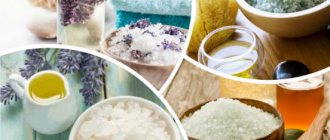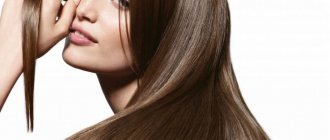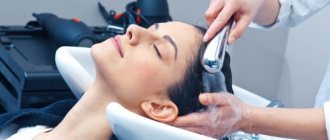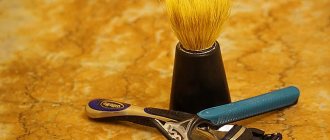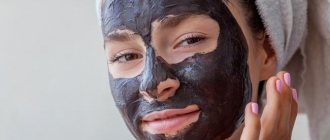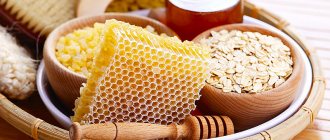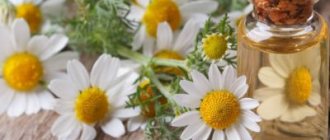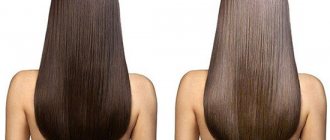Henna for hair: benefits
Today, in order to be stylish, it is enough to purchase a stylish package of selected henna. This paint contains no chemicals or other impurities, and is brought directly from distant India. That's why quality is guaranteed. The composition of this natural paint exceeds all expectations, and the color palette is replete with all sorts of shades: brown, light brown. Henna has many of them: from gold to copper.
Where is henna made?
The henna herb itself, which is the basis of Indian hair dyes, is the dried leaves of the lawsonia plant. India, Pakistan, Sri Lanka and other eastern countries are rich in such plantations. Lawsonia is a lover of warm climates. It gives exactly these warm sunny shades to the hair. It is precisely because of its natural origin that we can safely say that henna has benefits for hair that cannot be compared with artificial dyes.
The henna is carefully processed in factories in India and packaged locally. This technology does not allow mixing simple grass or anything else into the paint during transportation. If you want to be truly stylish, well-groomed and healthy, choose selected henna for yourself!
But you need to be careful, because although the East is a delicate matter, we get a large number of fakes from there
That is why it is important to take only the highest quality products from the supplier country, which is often determined by price. But we’ll talk about this in more detail below.
Benefits of henna for hair
How beneficial is henna for hair? As mentioned above, henna is useful at least because it is a natural dye. By the way, if they say that there is colorless henna for masks, this is nonsense. Henna cannot be colorless
Therefore, when purchasing henna for masks or hair treatments, it is important to consult with your hairdresser to avoid problems with hair coloring
Benefits of henna for hair and health:
- Henna prevents hair breakage. This is especially true for regions with hard water, because... This is a rather aggressive environment for hair. This is not to say that this is a panacea, but to prevent breakage, the benefits of henna for hair are invaluable.
- Henna works great for problems with dry skin and “oily” hair. Natural antiseptic elements have a beneficial effect on protecting the scalp from fungus.
- When using henna to color hair, the dye does not harm the natural hair color and does not damage the roots. Thus, chemical dyes are distinguished by the fact that they “burn out” the hair, it becomes weak, and often splits.
- Microelements of henna perfectly nourish the hair follicles. Systematic henna masks for hair can restore health not only to the hair, but also to the skin.
- The benefits of henna for hair are noticeable in case of dandruff problems. If you have dandruff, henna is also recommended in the form of masks, because... The microelements included in its composition correct the functioning of the sebaceous glands of the head. As mentioned above, this helps eliminate “oily scalp” and solves the problem of dandruff in the initial, not advanced version of the problem.
- Henna has no obvious contraindications, so it is often used for hair coloring even by pregnant women. Allergic reactions to the natural dye were not noticed, which is why this method of hair coloring has become so popular. Of course, the benefits of henna for hair are limited by individual tolerance, but as reviews and practice show, there are only a few such people.
- Many experts are inclined to believe that henna is good for hair, because... strengthens them and protects them from external irritants and sunlight. Some believe that henna can protect hair from fading in the sun, for example, in the summer.
- You can use henna at any age. Both at a young age and in old age, henna is perceived almost equally by the body.
It is noteworthy that in India, henna is considered a product that every woman should have. The benefits and harms of henna in this country are not covered anywhere, because... this product is as popular as salt in our stores.
Based on the above advantages, it becomes clear that this dye really has a lot of positive reviews. The benefits and harms of henna for hair are most likely a matter of personal preference. Few natural components can harm as much as chemistry can.
However, it is important to understand that each nationality is different in its structure, skin color and, of course, hair structure. Therefore, what is very popular and accepted in India may not always help our hair types.
Remember that henna is a permanent dye, so if used unprofessionally, you can “change yourself beyond recognition.”
Composition and benefits
Moroccan clay and a product that is mined in the Dead Sea is the most valuable for the beauty and health of curls. The composition contains all the microelements necessary to restore strands and care for the scalp. It is a natural growth stimulator that is often added to phytocosmetics.
The action of the product is due to the presence of the following components:
- phosphate;
- silica;
- nitrogen;
- potassium;
- magnesium;
- radium;
- quartz;
- strontium;
- iron.
The rich composition makes the product indispensable in the care of damaged hair. Clay has powerful absorbent properties; it easily removes contaminants of various origins.
It also regulates the functioning of the sebaceous glands. If the dermis is dry, it moisturizes, and if the dermis is too oily, it dries it out.
Other useful properties:
- accelerates metabolic processes in follicles;
- improves blood circulation in the scalp;
- strengthens roots and stops hair loss;
- moisturizes the ends, preventing them from splitting;
- relieves itching and inflammation, disinfects the dermis;
- fights dandruff;
- not addictive.
Henna masks for dry hair. Recipes for hair masks with henna
Masks with henna to strengthen hair: 1) You will need: henna (already diluted with water), beaten yolk, burdock oil, sour cream. Add all ingredients to the slurry (butter and sour cream 2 tablespoons each), mix. Apply to hair.2) Recipe with blue clay. Mix henna and clay with hot water, add a few drops of tea tree essential oil (no more than 5 drops).
Mask for split ends. Henna copes perfectly with such a problem as split ends. Surely many people who have shoulder length hair and below experience this. Then you should try one of the masks: 1) Pour a full spoon of flaxseed with 1 glass of boiling water and leave. Then heat it to 70°C and pour in the henna, using the infusion instead of water. Apply for 50-60 minutes.2) Mix diluted henna with several tablespoons of mayonnaise, add honey.
Hair mask with henna at home for dry hair:1) dilute 30 g of henna with hot milk, add a few tablespoons of honey.2) Pour the required amount of henna with hot water, add crushed banana and mayonnaise.3) Dilute henna with hot whey, add honey and burdock oil. Leave on hair for 45 minutes.4) Pour a few tablespoons of warm olive oil into the prepared henna, add mashed avocado pulp, mix. Apply to hair.
Masks for oily hair: 1) Dilute henna with warm sour milk, add pre-soaked rye bread (know that a hair mask made from black bread has a whole range of useful substances); 2) Soften a ripe tomato and add to henna diluted with water.
Recipes for nourishing masks: 1) Vitamin hair mask henna and parsley with dill, which must be chopped. Pour henna over hot green tea, mix with herbs
For blondes, use with caution; the mask has a somewhat coloring effect. 2) Oil mask with henna. In a water bath, heat a mixture of burdock, castor and olive oils to a temperature pleasant for the skin, pour henna over this mixture
Apply to the head, cover with polyethylene and a warm towel, leave for thirty-five to forty minutes.
Hair mask with henna and kefir. Recipe: heat 200 g of kefir in a water bath, pour henna over it, beat in chicken yolk. You can keep this mask for 40-45 minutes.
Recipe for hair loss. Two tablespoons of lemon juice, a little cottage cheese, honey - mix all the ingredients and add to the henna paste. Rub the mixture into the roots of your hair, first put on a plastic cap and a warm cap on top.
Henna masks to accelerate hair growth .1) Colorless henna - well restores the vitality of hair and its beauty. Henna prepared in the usual way + a spoonful of honey + juice of one lemon + burdock oil. Add all ingredients to henna one spoon at a time. 2) A henna hair mask with the addition of mustard for hair growth will not only enhance the germination of curls, but will make the hair smooth and shiny. To do this, you need to dilute the henna, add a tablespoon of dry mustard and honey, and stir. Apply the mixture for half an hour. By the way, a mustard hair growth mask at home is recommended by many of our readers.
Popular means
There are many recipes for masks with black clay in traditional medicine. Each of them is aimed at solving specific problems with hair and dermis. The compositions are prepared very simply; no special skills are required. Girls highly value medicinal mixtures for their availability and effectiveness.
Let's look at the most popular
Strengthening the roots
We dilute the clay with water, we need 4 tablespoons of base. Add one yolk and a teaspoon of liquid or previously melted honey in a water bath. Mix well, apply to the roots and lengths, leave for half an hour, rinse with shampoo.
The composition stimulates metabolic processes in the follicles, strengthens the follicles and enhances the growth of strands. You can see improvements after just 4 weeks of regular use of the product. The hair will become shiny, split ends will disappear, and new fluff will appear.
Stopping hair loss
Place 4 tablespoons of clay mass in a ceramic container, add to it a tablespoon of preheated linseed and burdock oil, 3 drops of rosemary ether. Apply the mask to the roots and lengths, leave in a warm place for 30 minutes. Wash off with plenty of shampoo.
The oils chosen for the composition cope well with the problem of hair loss; they enhance the effect of the clay. In addition, the active components restore damaged curl structures, protect them from the negative effects of external factors and accelerate growth.
Stimulating growth
We dilute two tablespoons of clay with warm kefir so that the consistency is similar to thin sour cream. Distribute on the skin, gently massaging it, apply the remainder to the length of the strands. Leave in a warm place for half an hour, rinse with shampoo.
Kefir contains lactic acids, which strengthen strands and trigger metabolism at the cellular level. It is simply indispensable for accelerating growth. Also, active substances help restore the keratin layer of hairs.
Add shine and strength
We need a tablespoon of henna and two tablespoons of black clay, mix them. Add a tablespoon of apple cider vinegar and add water to obtain the required consistency. We treat all hair from roots to ends with the mixture, leave for 30 minutes, rinse with shampoo.
Colorless henna and black clay are an ideal tandem for strengthening follicles and stimulating growth. Vinegar in this recipe plays the role of a conditioning agent; it softens the strands, makes them soft and manageable, and adds shine.
We get the volume
Take one egg, separate the yolk from it, and pour it into a bowl. Add one teaspoon each of black clay, liquid honey, melted butter, lemon juice and apple cider vinegar. Mix thoroughly so that all components are combined and there are no lumps left. Apply to roots and lengths, insulate for 15 minutes. Wash off with non-hot water and shampoo.
The components of the composition will make the strands soft, fluffy and airy. Excessive shine of the roots will be eliminated, the hair will gain volume, and will not get dirty for a long time. The mask also activates the growth of new hair.
What's happened
Henna is a natural substance that is obtained from plants in eastern countries.
The copper one is obtained by grinding the leaves of Lawsonia, and the colorless one is obtained from the leaves of Cassia obtufolia.
Composition and beneficial properties
Henna has a truly rich range of beneficial substances that have a healing effect.
- emodin (gives curls a bright shine);
- carotene (prevents fragility and split ends);
- betaine (hydration and nutrition);
- rutin (strengthening);
- fisalen (antifungal effect);
- aloe-emodin (stimulation of hair follicles);
- Crisophanol (antibacterial substance).
What effect does
Thanks to an impressive range of useful substances, this magical powder can help get rid of hair problems.
- Restoring natural shine.
- General strengthening effect, adding thickness and volume.
- Reducing excessive fragility.
- Accelerates growth, slows down loss.
- Eliminates greasiness from oily hair.
- Relieves itching of sensitive scalp.
Varieties
Henna is divided into 4 types:
- colorless;
- copper;
- white;
- black.
To treat hair, it is preferable to use colorless henna.
It is natural and is used directly to get rid of problems. Copper is also natural, but has a coloring property, which is not always needed by a woman. Even a teenager can afford natural henna; it costs from 11 to 100 rubles.
White and black are a synthetic product that is incapable of treating hair, it’s just regular dye.
This dye is called henna only because a small amount of colorless powder is added to it. The cost is also low, the price varies around 100–150 rubles. Read about the benefits and harms of henna staining on our website.
Contraindications
The main contraindication is an allergic reaction. Before use, it is necessary to conduct a test - on the wrist or elbow.
If there is no irritation, the product can be safely used.
Difference between Iranian colorless henna and Indian colorless henna.
I tried both. My hair is natural color. I don't paint them.
Iranian colorless henna is softer and can be washed off with water without shampoo. There are 2 of these bags in a box.
Indian colorless henna is more vigorous.
It irritates the scalp a little more, and if you want to make masks to stimulate hair growth, it is better to use Indian. And this henna needs to be washed off with shampoo. The effect of the mask will not disappear, the shine and volume will remain. I really enjoyed washing off the henna with our soap nut shampoos. And they combine with henna, and the smell of henna goes away from the hair.
I made one general article on both types of colorless henna. To order it. select
Indications for the use of henna masks
Such masks have a complex effect on the hair and scalp, so cosmetologists recommend using these cosmetics from time to time to absolutely all people, regardless of the type and problem of hair. But there are a number of indications for which it is imperative to use masks with this natural substance.
These indications include:
- dull hair, the bright color of which will be fully restored after just a few procedures;
- depleted lifeless hair, which will become healthier and more vibrant after these cosmetics;
- weakened hair, which will become stronger as a result of this course of masks;
- brittle curls that will begin to strengthen and recover thanks to the elements present in the stems of lawsonia;
- preventing split ends;
- hair exposed to active negative effects of an aggressive environment;
- desire to speed up hair growth;
- active formation of dandruff, which cannot be eliminated by any other cosmetic products;
In fact, colorless henna can, to one degree or another, eliminate any problems of the hair and scalp; the main thing is to correctly prepare and apply a cosmetic product, the composition of which best matches the specifics of the problem being eliminated.
But, despite the huge number of indications and the most beneficial effect on the scalp and hair, cosmetic products prepared on the basis of colorless henna also have a small number of contraindications for which their use is not recommended. The following factors are contraindications:
- If a woman has a naturally very light shade of blonde. In this case, the use of masks made from colorless henna can be fraught with giving the hair a slightly greenish tint, which will wash off after 3-4 days.
- If the hair has undergone an active lightening procedure. The side effect may be the same: the formation of a greenish tint.
- If a chemical hair dyeing procedure was carried out a few days ago, or if a similar procedure is planned. In this case, the artificial color may not lie completely evenly on the hair.
In order for homemade henna masks to bring maximum effect and not cause the slightest harm to your hair, you should familiarize yourself with the basic rules for using this cosmetic product.
Rules for using colorless henna:
- It is better to purchase lavsonia powder in reliable specialized stores and only if the product has a quality certificate. Otherwise, you can buy a low-quality product that will not have the expected positive effect on your hair.
- It is not recommended to use ordinary tap water to prepare cosmetic henna masks. First you need to boil it, and if possible, then pass it through special cleaning filters. Also, instead of ordinary water, you can use decoctions of medicinal herbs, such as chamomile, burdock, nettle, and sage.
- If the mask contains other auxiliary ingredients, then they must also be of high quality, since otherwise the hair may be damaged.
- The mask must be applied to washed, combed and slightly damp strands.
- The ready-made mask is rubbed into the scalp and hair follicles with gentle, not intense movements without strong pressure, and only after that is distributed along the entire length of the strands.
- After applying the cosmetic product, the head must be wrapped in a hairdresser's cap or ordinary food-grade polyethylene, and additionally insulated with a preheated towel.
- The length of time the mask is left on the head depends not only on the specific recipe, but also on the color of the hair. Blondes are not recommended to keep the henna mask on for longer than 20 minutes; fair-haired and redheads can keep it on for half an hour, but brunettes can keep it on for up to an hour.
- When removing the mask, it is not recommended to use shampoo, even a very delicate one. The mask is easily washed off without any residue using regular heated water.
- It is not recommended to use homemade henna masks more than twice a month, since with more intensive use, the scalp may begin to dry out greatly, and the cosmetic effect of the masks will become diametrically opposite, exclusively negative.
Secrets of application
Using masks with black clay is very simple and pleasant; they are easily distributed throughout the curls, do not create foam, and are easy to wash out. To get a good effect from the compounds you need to know how to use them correctly.
Experts recommend following these tips:
- The clay must be diluted with warm, purified water before use. The mass should turn out creamy.
- Do not allow the product to come into contact with the eyes or the skin around them. This may cause a negative reaction.
- The composition can be applied not only to the roots, but along the entire length. They work great against split ends.
- After treatment, the head should be wrapped in a plastic bag and insulated with a towel on top.
The standard leaving time for the mask is 30 minutes, after which it is washed off and conditioner is applied. The course of treatment consists of 5-8 sessions, which should be carried out 1-2 times a week.
Strengthening hair mask
Compound:
- henna (colorless) – four sachets;
- castor oil - two large spoons;
- burdock oil - two large spoons;
- honey - dessert spoon;
- water - two glasses;
- chicken egg - two.
Cooking method:
- Boil water, cool to about 70 degrees, dissolve honey in it.
- Pour the resulting liquid over the henna, stir well, and let stand for a quarter of an hour.
- Mix the oils and heat in a water bath.
- Separate the yolks from the whites, grind the yolks together with the butter mixture.
- Combine the resulting mixture with henna and mix everything well.
The amount of ingredients in the recipe is designed for long curls. If you have medium-length hair or even short hair, reduce the amount of ingredients while maintaining the proportions.
The resulting mixture should be applied to the hair, it should cover it with a fairly thick layer. Be sure to put a polyethylene cap on your head and tie a scarf or towel over it. The first time the mask is left on the hair for half an hour, after which the curls are washed well with running water. Apply regularly approximately twice a week, each time increasing the exposure time by a quarter of an hour until it reaches a maximum period of 1.5 hours.
Of course, before using the product for the first time, you need to conduct a test by applying it to your wrist for a quarter of an hour. Henna usually does not cause allergies, but the mask is multi-component, so the risk of allergic reactions increases significantly. Only if there is no doubt that your body accepts the product calmly, it can be used for hair care.
Rules for applying masks
In order for a natural henna mask to be effective and not have a negative effect on the dermis of the face, you need to follow simple rules:
- Test for an allergic reaction. To do this, apply a small amount of the mixture to thin skin around the wrist. If after 20 minutes there is no redness or burning effect, the mask can be applied to the face.
- Before starting the procedure, the dermis of the face must be thoroughly cleansed of cosmetics, fat and sweat secretions and impurities.
- Before applying the application, it is recommended to steam your face using a hot compress. This will greatly increase the effectiveness of the procedure.
- The duration of applying a mask with henna should not exceed 20 minutes. You shouldn't hold it longer.
- If the composition begins to dry out quickly, the procedure should be stopped and the mask should be washed off a little earlier.
- The cosmetic procedure should be performed about an hour before bedtime.
- If the cosmetic mixture turns out to be too thick, it can be diluted with boiled water or infusion of medicinal herbs.
After removing the application, you can apply grape seed oil or a light cream to your face.
Colorless henna mask
When colorless henna is used for hair, the masks are applied to dry or slightly damp hair, rubbing the mixture into the skin, and if necessary (long hair), distribute along the length of the strands.
It is advisable to put a plastic shower cap on your head and wrap it with a towel. When first used, the exposure time should not exceed an hour. Long-term exposure may cause blond hair to become colored. A mask based on natural products can be used instead of shampoo; after application, rinse thoroughly with warm, clean water, or use together with a balm or conditioner. It is worth noting that sometimes you can come across the concept of “white henna mask”, which is a mistake. The fact is that 100% natural product is colorless henna
And white henna is a chemical compound used to lighten hair. The active ingredient in it is hydrogen peroxide in high concentration. Therefore, such “henna” has nothing in common with a natural product.
Colorless henna for body skin.
The manufacturer recommends diluting several bags of henna in water in the bath, stirring and thus taking a bath.
I will say that colorless henna can be used as a fine scrub. To apply to the skin of the body, you need to brew colorless henna in the same way as for applying to the hair. If you are going to the bathhouse or intend to apply a scrub to your body in the bathroom, brew two bags at once. Apply half to your hair, and leave the other half and use instead of a scrub. For a scrub, it is better to brew henna like thick sour cream.
Colorless henna in the form of a body scrub is suitable for those who like a fine and fairly hard scrub. The particles are smaller than in sugar scrubs. For those who ordered scrubs on our website, I will write that the particles of brewed colorless henna are much harder than the eucalyptus particles in Moroccan beldi and it does not lather. After peeling with henna, you want to apply cream or oil to moisturize the skin.
Causes of baldness
There are many reasons why hair begins to fall out. Some require long-term treatment, while others can be eliminated quite simply:
- Hormonal disorders. Hair problems often begin in women during pregnancy, menopause, or when taking oral contraceptives incorrectly. Baldness can also be a signal of a disruption in the normal functioning of the endocrine system.
- Poor nutrition. With a lack of vitamins and minerals, the hair quickly thins out, since the follicles do not receive the substances necessary for the high-quality construction of the hair shaft. Some of the hair follicles “fall asleep”, and the lifespan of the hair is limited.
- Severe or prolonged stress. Provokes sharp fluctuations in hormonal levels and deterioration of capillary circulation. As a result, the hair roots weaken and they begin to fall out.
- Tight ponytails and braids. They damage the follicles, break the hair shaft, and do not give the hair normal nutrition during the day. If you do them constantly, their condition will deteriorate very quickly.
- Scalp diseases. They lead to the formation of wounds and ulcers, after healing of which scars may remain. And new hair will not grow in this place.
These are the most basic problems, without solving which it will still not be possible to strengthen your hair with henna masks or other folk methods. Although they will be able to stop rapid baldness for a while. But in this case, henna is just an auxiliary tool.
Properties of henna
Since ancient times, henna has been used to improve the condition of the body. The properties that formed the basis of health recipes can be used to treat the skin. Henna has antibacterial and anti-inflammatory effects, and also whitens the skin. If it is used independently without any additives, it cannot cause allergies or irritation. Therefore, henna is suitable even for sensitive skin.
These beneficial properties are explained by the special composition of henna. It contains acid, which affects the production of collagen and inhibits the development of inflammation. For this reason, henna is often included in anti-aging products.
Henna is perfect not only for aging skin, but also for teenage skin. Many cosmetologists use it to quickly eliminate acne and blackheads. A mask based on it often becomes the final step in skin cleansing. It helps to pull out those dirt and grease plugs that could not be removed mechanically.
Henna can be used alone or with various additives. It goes well with essential oils and dairy products. To get a film mask, you can add gelatin to it.
An important advantage of henna is its absolute naturalness. This product is made from dried lavsonia leaves. This plant is absolutely safe and environmentally friendly. This can be a big consideration for those trying to switch to organic skin care products. It is impossible not to note the low price. One procedure will cost no more than 50 rubles.
Kinds
A variety of coloring products can be obtained from crushed lavsonia leaves. They differ not only in the country of manufacture, but also in the color palette, as well as the range of applications.
One of the popular natural hair coloring products is Iranian henna. This product is mainly used to color your hair red. Moreover, if you add other natural components to the diluted henna powder, you can achieve a beautiful shade, for example, caramel or even chocolate color. These tinted products are great for those with dark hair, as they help create a unique and inimitable look.
In order to diversify the color of Iranian henna, you can add various natural products to it. For example, oriental beauties achieved interesting color shades by mixing the product with turmeric powder, coffee, and various herbal decoctions.
To make coloring not only a cosmetic procedure, but also a health one, you can add various essential oils to henna powder. The components they contain will have a beneficial effect on the scalp, leading to normalization of blood flow in the hair follicles.
Indian henna is another option for a coloring product. This natural paint comes in several shades. For example, the color palette of this product includes the following colors and shades:
- mahogany;
- gold;
- burgundy;
- chestnut;
- bitter chocolate;
- black.
The dye is widely used in India not only for hair coloring, but also for hair treatment. For example, Indian beauties use it to get rid of dandruff and make their hair stronger and silkier.
It also helps to normalize the growth of curls. Various natural additives can be added to liquid henna diluted with water.
Colorless henna is also used for hair care. This product is suitable for women who are happy with their hair color but would like to improve its structure. Colorless henna is more of a medicinal product than a cosmetic one. It is used to normalize hair growth, as well as to give it beautiful smoothness and silkiness.
It is worth noting that the product does not contain color pigments. This means that you don't have to worry about coloring your hair when using it. Experts note that to achieve the desired effect, colorless henna should be used in a course. If desired, you can thus “treat” your hair several times throughout the year.
The use of the product contributes to:
- improving hair growth by activating blood circulation in the hair follicles;
- eliminating dandruff;
- moisturizing the scalp and, as a result, reducing excess oiliness;
- normalization of secretion produced by the sebaceous glands;
- adding shine to curls.
For many years, it was generally accepted that henna was a product that was not at all suitable for blondes. However, this is not quite true. Nowadays, there are henna-based products that help make hair lighter. This type of henna is called white.
Some manufacturers of this natural dye claim that by using the product you can achieve snow-white curls. However, not all women who have tried this paint agree with this.
Colorless henna for facial skin.
Manufacturers write on henna boxes that it can be applied to the skin of the face. You can do this, but DO NOT RUB your face, because even brewed henna has particles that are much harder than what is required for peeling the facial skin.
As far as I understand, a mask of colorless henna can be useful for normal and oily skin. It can remove excess oil and improve complexion. Brew the mask the same way as a hair mask, but use 1-2 teaspoons. Apply for 10-15 minutes. Do not apply to the eyelid area.
It is better not to apply henna to dry skin.
Treating hair with henna
Treatment of weakened hair with henna involves the use of a natural dye in combination with essential oils, food, and herbal decoctions.
Depending on the recipe, the masks not only strengthen the curls, but also give them shine, increase thickness, normalize the functioning of the sebaceous glands, and restore damaged ends.
Egg mask with henna
Colorless henna in the volume of half a glass should be diluted with a quarter glass of hot water. After thorough mixing, one chicken egg is added to the base.
POPULAR WITH READERS: How to speed up hair growth at home, mask recipes
The mask is first applied to the roots of the curls, then distributed along their entire length. Exposure time - from 30 to 50 minutes.
Mask with yogurt and henna
Dry colorless henna in the amount of half a glass should be brewed with warm water until a viscous slurry forms.
To the resulting base add 2-3 tablespoons of natural yogurt, without dyes or additives.
The exposure time of such a mask is from 30 to 60 minutes; it is more suitable for those who have dry and brittle hair.
Mask of Arabian beauties
Powder of colorless lavsonia in the volume of half a glass should be poured with boiling water so that a thick paste is obtained. It should sit in a closed container for 15 minutes.
Then 100 ml of olive, almond or sunflower oil is heated in a water bath. Warm oil is gradually poured into the diluted henna.
The result should be a liquid paste; three tablespoons of oil solutions of vitamin E and A are added to it. Everything is thoroughly mixed.
The resulting mixture is applied to moistened hair for 4 hours, washed off with warm water in large quantities, then the curls are additionally washed with shampoo.
If the hair is short, then the prepared composition is enough for two or three times of use; store it in the refrigerator and warm it up a little before application.
Mask with colorless henna
Powder from one bag of colorless henna (50 grams) is mixed with two large spoons of lemon juice. Then two eggs and 2 tablespoons of kefir, natural yogurt or yogurt are poured into the mixture.
All components are thoroughly mixed until a homogeneous mass is obtained.
The mask is applied to the hair roots and the strands themselves for 45 minutes, washed off with water and shampoo.
The use of this composition makes the hair softer, stronger and increases its shine.
Mask with henna and vinegar
Half a cup of Iranian or Indian henna is mixed with hot water to the consistency of sour cream. Three large spoons of apple cider vinegar are added to the resulting mass. Apply the mask for one hour.
Its use gives the curls a golden hue, eliminates dandruff, strengthens the strength of the hair follicles and at the same time makes it easier to style the strands.
Mask with essential oils
Henna powder from one bag should be combined with two tablespoons of olive oil, a spoonful of castor cosmetic oil, and a spoonful of tea tree oil (it can be replaced with essential oils of lavender, rose, burdock, and grape seed).
The prepared mixture is poured with boiling water and immediately stirred continuously, so that the resulting mass is paste-like.
The mask is rubbed well into the scalp, the residue is distributed throughout the strands. Wash it off after 45-60 minutes. This recipe is effective when hair loss becomes critical and leads to baldness.
Mask with cloves
You need to mix a tablespoon of henna powder, kefir, cocoa powder, burdock oil. Powder obtained from 5-8 cloves and one egg yolk are added to the mixed gruel.
POPULAR WITH READERS: Causes of diffuse hair loss in women, treatment
The resulting mixture should have the consistency of sour cream; it is rubbed into the scalp and applied to the entire length of the hair. Exposure time is one to two hours.
Mask with kefir and henna
The henna bag should be filled with warm kefir, yogurt or fermented baked milk so that a homogeneous mass is obtained.
This mask is applied to the hair for 30-40 minutes, it enhances the strength of the curls, softens them and improves the nutrition of the hair follicles.
Methods of use
At home, you can use clay using different methods. To improve the effect, it is recommended to combine it with other healthy products. If you only need to strengthen your curls and stimulate their growth, you can use the product yourself. There are such variations:
- Instead of shampoo. Clay can be a complete replacement for shampoo, especially if you have sensitive and allergy-prone skin. We will need 3 tablespoons of the base product and 4 tablespoons each of apple cider vinegar and water. Mix the mixture well, rub it into the skin and distribute it over the entire length, massage the head for 5-7 minutes, then rinse with water and use conditioner.
- Rinse. If you don’t have time to bother with masks and homemade shampoo, prepare a useful composition for rinsing your curls after washing. Mix a tablespoon of black clay in two glasses of water. Pour it over your head and gently massage your skin. There is no need to rinse; after drying, comb your hair well to remove grains.
- In complex. A hair mask with black clay and other medicinal substances is an excellent treatment option. The product can be mixed with honey, kefir, yogurt, herbal decoctions and oils, vitamins, etc. The main thing is to strictly observe the proportions.
Recipes
Having learned everything about the beneficial properties of henna and the features of its use, you can begin the procedures. Please note that all recipes use colorless henna. You can purchase it at any pharmacy.
There are several recipes for henna-based masks. Their main task is to eliminate blackheads and even out facial tone. In order to choose the most suitable composition, carefully read the description. It indicates the recommended skin type and other key features of the product.
Purifying mask for all skin types
This product has neutral properties and is suitable for both oily and dry skin. Despite its simple composition, it perfectly helps against acne and post-acne. To prepare it, you only need colorless henna and hot water. 1.5-2 tbsp. Pour the powder with enough water to obtain a creamy consistency. Usually 2-3 tbsp is enough. liquids.
Intensive mask against acne and blackheads
Contaminated, oily skin needs stronger cleansing. Use this treatment with caution so as not to dry out your face. Its use is possible on dry and normal skin, but only as a spot treatment against acne and certain inflammations.
Heat half a glass of kefir over low heat. Add 2.5 tbsp. colorless henna and continue cooking, stirring constantly. After a few minutes, remove from heat and cool to a comfortable temperature. Apply in a thick layer.
Mask for dry skin
If you need to cleanse dry skin from blackheads and pimples, use the following recipe. It will keep the skin hydrated. Brew henna with hot water as described in the first recipe. When it cools slightly, add 1 tbsp. full-fat sour cream and vitamin E. Vitamin E is available in liquid form or capsules. You can purchase it in capsules and simply extract the contents.
Mask against first wrinkles
If wrinkles appear on your facial skin, you can slow down the aging process with this simple remedy. For this recipe, colorless henna is brewed as usual. After cooling, add 2 drops of rose oil or sandalwood oil to it.
Anti-acne film mask
Film masks deeply cleanse pores and refresh the skin. To prepare them you need gelatin. It gives the product the necessary texture. Gelatin is also known to have anti-aging properties. Therefore, the mask can be recommended for aging skin.
First prepare the decoction. 1 tbsp. Boil colorless henna in a glass of water. Bring to a boil, remove from heat and cool completely. Now you need to dilute the gelatin. 1 tsp powder pour 2 tbsp. henna decoction and leave to swell. The mass will be ready in 2.5-3 hours.
When the gelatin is ready, add 1 tbsp to it. decoction and heat. The gelatin must be completely dissolved. Cool the mixture slightly and immediately apply to your face. Wait for the film to dry completely and carefully remove it from your face. The combination of gelatin and colorless henna can work real miracles. Under the influence of the mask, the skin is transformed: fine wrinkles are smoothed out, pores are cleaned, and a beautiful complexion returns.
Thus, henna-based products can be used to care for any skin type. Their main task is to cleanse the face of blackheads and pimples. In addition, masks are able to regenerate the skin and gradually rejuvenate it. If used regularly, they will give noticeable and lasting results.

